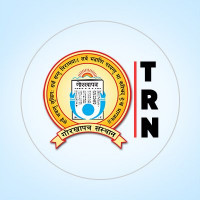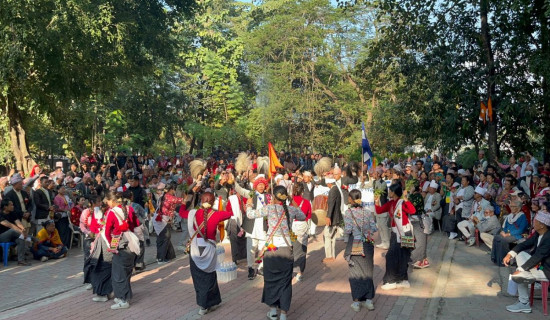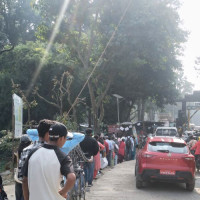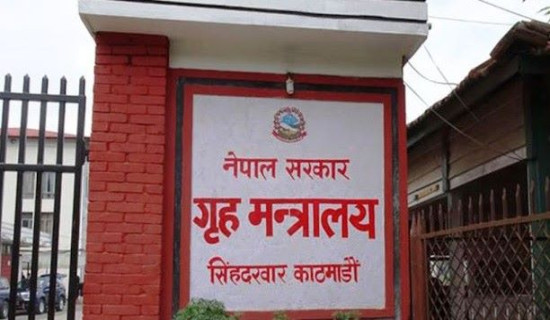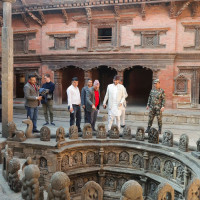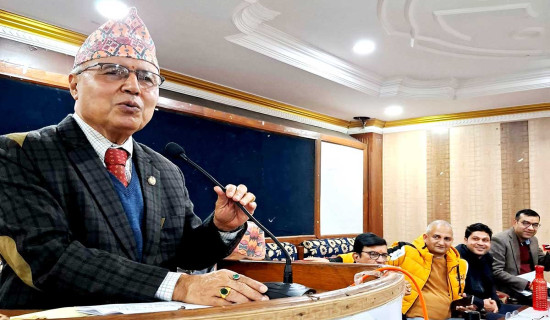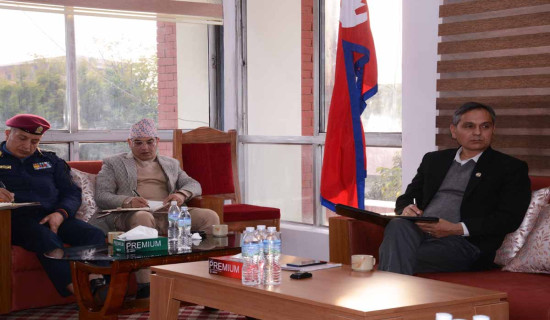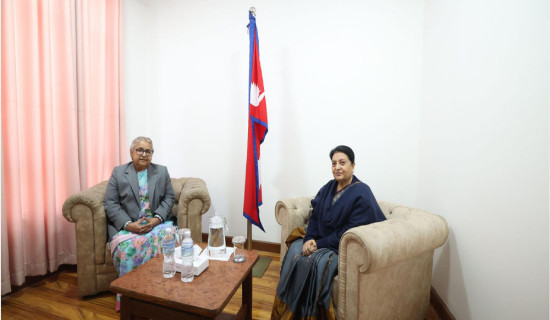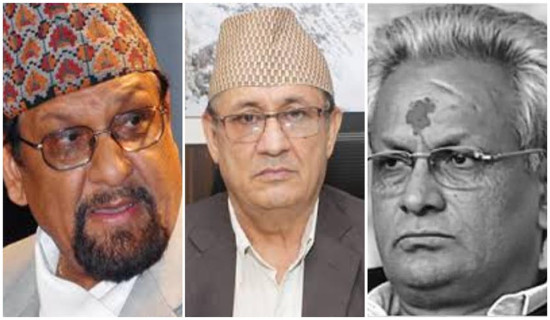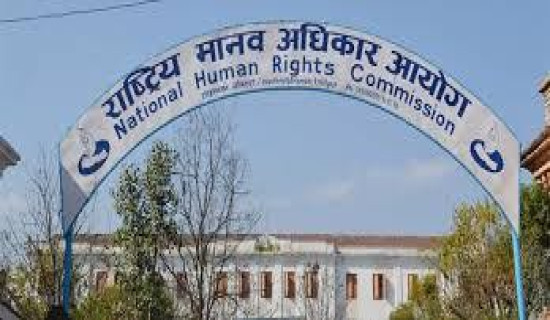- Monday, 8 December 2025
Nepal’s Nationalism Trap and the Gen Z Turning Point
By Dr Pralhad Karki
A New Wave of Frustration
Nepal stands at a decisive crossroads. A powerful wave of generational frustration is sweeping across the country, challenging decades of political stagnation and unfulfilled promises. Instead of reflecting on their governance failures, many political forces have once again reached for their most familiar tool: nationalism. By blaming foreign powers and reviving old slogans, they hope to divert youth anger outward and maintain control over a rapidly changing society. In response, young people are finding innovative ways to resist. They organise online campaigns to raise awareness, participate in peaceful protests, and utilise social media to disseminate alternative narratives and hold leaders accountable. These actions empower the youth and align with their demand for real change and progress.
This strategy, once politically effective, now faces a different generation: digitally connected, globally aware, and politically impatient. Nationalism without vision is becoming a blunt instrument, losing its power to mobilise informed and assertive citizens.
Civilizational Friendships: Nepal’s Historical Strength
For centuries, Nepal’s geopolitical identity was defined not by isolation or aggression but by civilizational friendships. The marriage of Princess Bhrikuti to the Tibetan King Songtsen Gampo in the 7th century forged enduring cultural and religious bonds between Nepal and Tibet.
Nepal–India relations run even deeper. Shared epics like Ram–Sita, the Janakpur–Ayodhya connection, religious pilgrimages, trade, and intermarriage have bound communities across borders for generations.
In the mid-20th century, Nepal expanded these relationships globally. European missionaries supported health and education, the U.S. engaged through Peace Corps volunteers and academic exchanges, Soviet scholarships opened educational opportunities, and Japan strengthened religious and development ties.
King Mahendra recognised that national strength must be rooted in civilizational identity, not transient politics. He famously declared, “Our culture is the foundation of our nation’s existence.” With this confidence, Nepal successfully maintained independence and diplomatic balance between powerful neighbours.
Nationalism as a Political Weapon—and Its Limits
Across the world, political movements have discovered that nationalism is the fastest way to mobilise people. It appeals to emotion, belonging, and pride. As Jawaharlal Nehru warned, however, “Nationalism is good in its place, but it is an unreliable friend and an unsafe historian.”
Nepal’s political history mirrors this pattern. Opposition parties often use anti-foreign rhetoric to rally support. Once in power, these same parties later shift to pragmatic diplomacy. This paradox between emotional nationalism and political reality has played out repeatedly during debates on the MCC compact, Lipulekh border disputes, and BRI negotiations.
Mao Zedong once said, “Contradiction is universal; without contradiction nothing would exist.” Nepal’s diplomacy is all about managing these challenges, finding a balance between different friendships and interests without getting caught up in emotional politics. King Mahendra understood this. In the 1960s, he told the United Nations, “Nepal belongs neither to the Eastern bloc nor the Western bloc — we belong to the Nepali bloc.” His approach of non-alignment and active neutrality helped Nepal work with both East and West while protecting its independence.
But the nationalism that once brought people together is no longer working. Gen Z is more informed, connected, and less likely to believe old stories. They want clear answers and real accountability, not empty slogans or blame.
Gen Z’s Challenge to Old Politics
Three decades after democracy’s restoration and more than fifteen years after the republican shift, young Nepalis are disillusioned. They were promised dignity, jobs, and good governance. Instead, they face entrenched corruption, party capture of institutions, economic stagnation, and leadership unwilling to give way.
This frustration has reached a generational peak. Youth-led street protests such as the "Stand for Change" march in Kathmandu and the "Digital Sit-In" campaign on social media reveal a society that has lost patience with political theatre. The involvement of overseas Nepali youth, especially through platforms like the 'Global Nepali Youth Club' and independent initiatives like 'Nepali Voices for Transparency', underscores the depth of this movement. This movement is not ideological; it is a reaction to systemic failure.
Rather than addressing these failures, elements of the political establishment and Nepal’s “deep state” have revived nationalist narratives to redirect youth anger outward. India, China, and Western countries are portrayed as culprits, while domestic responsibility remains unaddressed. Party-aligned media amplify these claims, and some commentators echo them without evidence.
This tactic may provide political leaders with some short-term relief, but it is risky in the long run. Nationalism can bring people together for a while, but only real vision and diplomacy can help a country grow. If parties ignore this movement, depend on their networks, or keep using nationalism, they risk the following:
• Erosion of legitimacy: Gen Z bypasses party-controlled narratives through digital platforms.
• Escalating unrest: Suppressing frustration through cadres could radicalise movements quickly.
• Diplomatic isolation: Overplayed nationalism undermines Nepal’s credibility abroad.
• Political realignment: Disillusioned youth could form new political forces that challenge old structures faster than expected.
As Winston Churchill warned, “Those who fail to learn from history are condemned to repeat it.” Nepal’s leadership is facing precisely this test.
A Strategic Vision for the Future
Nepal is at a crossroads. Its special location, culture, and history give it a chance to connect India and China, East and West, and blend tradition with modern life. To make this happen, the country needs clear goals, courage, and active involvement from young people.
For years, political parties have used nationalism to distract people from their frustrations, often blaming other countries without real proof. This might get cheers at rallies, but it hurts Nepal’s reputation and takes attention away from real problems. In today’s connected world, strong leadership matters more than emotional slogans.
Young people today have inherited these issues, but they also face new challenges. Frustrated by slow progress, corruption, and broken promises, they are speaking out both in Nepal and overseas. Their energy can change the country, but it needs to be focused on real action, not just protests.
Young people need to watch out for political tricks. Some parties still use nationalism to gather support and block real change. Blaming other countries without proof is not real diplomacy; it just distracts from important issues. Instead, the new generation should focus on organising in their communities, joining academic and cultural exchanges, and helping shape a diplomacy that shows Nepal’s independence.
The path forward is clear:
• Culturally, develop Lumbini and Janakpur as global hubs of pilgrimage and peace.
• Academically, build multinational educational collaborations.
• In diplomacy, choose neutrality and work with others to become a trusted mediator.
As Nelson Mandela said, “Vision without action is just a dream, action without vision just passes the time, and vision with action can change the world.”
Nepal’s young people are not just tomorrow’s leaders—they are making a difference today. Their creativity, courage, and global outlook can help Nepal move past old political problems. Now is the time to come together, stay informed, and build a future based on real vision, not empty words.

.jpg)
